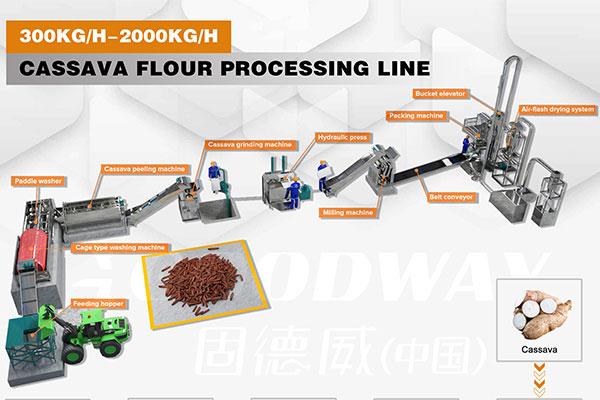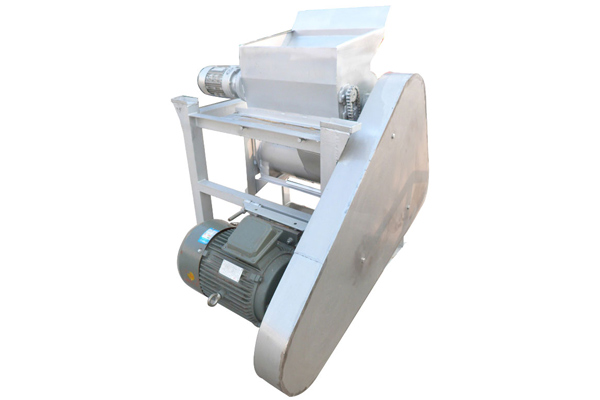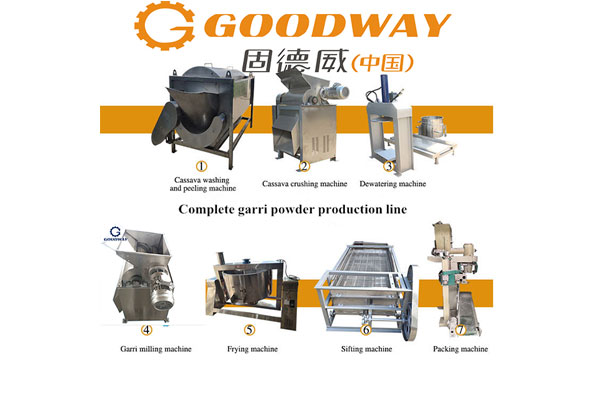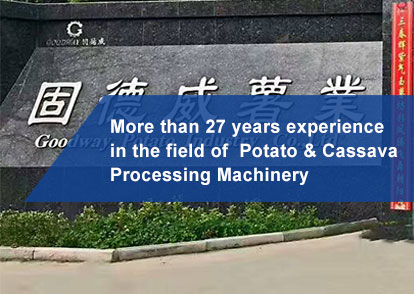Sweet potato, also known as sweet potato, sweet potato, hawthorn, red glutinous rice, etc., is an excellent raw material for starch processing. The sweet potato starch production process is actually a physical separation process, which separates the cellulose, protein, inorganic salts and other substances in the raw materials from the starch. In the production process, starch is separated from the water suspension by a large amount of water, using a special amount of water, depending on the nature of the starch being insoluble in cold water and having a specific gravity greater than water.
The production process is divided into conveying-cleaning-disintegrating-sieving-sand-precipitation(or concentration)-dehydration-drying-air-cooling packaging.
Basic principle of cleaning
The main purpose of the cleaning is to remove the sediment from the outer skin layer of the sweet potato and wash away the epidermis of the sweet potato roots. Cleaning the fresh sweet potato or sweet potato chips as raw materials for the production of starch is the basis for ensuring the quality of starch. The cleaning is cleaner, the quality of the starch is the better. The GD-QX type
sweet potato washer is structured as a horizontal cylinder, which relies on an electric motor to drive the gear to rotate the cylinder, so that the raw material is rolled up by the side cylinder, and the water is used as a medium to spray, rinse, and frustrate to remove the sediment and part of the skin.
Basic principle of disintegration
Sweet potato starch is mainly stored in the fleshy part of the root, and only a small amount is stored in the endothelium. The purpose of the disintegration is to destroy the structure of the sweet potato, so that the tiny starch granules can be smoothly separated from the roots. The starch released from the cells is called free starch. Residual in the cells inside the dregs is called bound starch.
Crushing is one of the most important processes in the processing of fresh potatoes. It is related to the flour yield of fresh potatoes and the quality of starch. The requirements for crushing are:
1. Break the cells of fresh potatoes as much as possible and release more free starch granules.
2. Easy to separate. It is not desirable that the skin residue is too fine, and the skin residue is too fine to separate the starch from other components, and the difficulty of separating the fine residue is increased.
The nail roller is a national patent of GOOWAY. It is made of steel and wood. It is made of special steel nails. The nails are sharp and hard and wear-resistant. It can ensure the continuity of the operation. The crushing is fine and uniform. The sweet potato is crushed into hair-like fibers to ensure the freeness of sweet potato starch. It is convenient for subsequent separation and can process 4-6 tons of fresh potatoes per hour.
GOODWAY recently launched a new type of equipment. After pulverization by the first stage of the nip roller, the slightly larger granules are further sorted for the second stage pulverization. The second-stage pulverization is hammer-type pulverization, which makes the pulverization finer, the starch free rate is higher, and the pulverization power is smaller.
Basic principle of screening
Sweet potato slag is a slender fiber that is larger than starch granules. The coefficient of swelling is also larger than that of starch granules, and the specific gravity is lighter than that of starch granules. The disintegrated raw slurry is treated with water as a medium, and is fully washed-pressureless percolation-extrusion followed by a multi-stage circulation process. The panning is sufficient to free the starch from the fibers. The non-pressure diafiltration allows the slurry water to pass through the screen holes and the fine slag remains on the mesh. Squeeze to further filter out the starch slurry water contained in the potato dregs.
Basic principles of purification and precipitation
The specific gravity of mud and sand is greater than that of water and greater than the specific gravity of starch granules. According to the principle of gravity separation, the use of cyclone sand removal, or the use of the trough sedimentation method, can achieve better results. The specific gravity of the yellow pulp is close to that of water and is lighter than the specific gravity of starch granules. Its shape is palm shape. The processing cycle is longer, the glue performance is greater. Sticky screen sticks to starch granules and is extremely difficult to separate. Therefore, the raw materials are required to be fresh, the process is short, and the separation is timely.
GOODWAY uses a
starch concentrator to separate starch from water, protein and fine fibers, increase starch concentration, improve starch quality, reduce the number of sedimentation tanks, and improve processing efficiency.
Basic principle of dehydration
The wet starch directly from the launder generally has a moisture content of about 55%. The concentrated slurries separated by
the butterfly separator and
the hydrocyclone are generally 20 waves, and both need to be centrifuged again to improve the drying efficiency and save energy.
The solid phase and the liquid phase are separated by the high-speed rotation of the scraper core, and most of the water is thrown out from the gap of the filter cloth on the screen. The moisture content of the wet powder is less than 40%, in order to save heat and increase the yield and quality requirements.
Vacuum dehydrator
It is simplified by a vacuum filter. The advantages are low speed, no noise, stable operation, good work continuity and easy operation. The true dehydration developed by GOOWAY and China Agricultural University has changed the price of the original vacuum dewatering equipment, and introduced a vacuum dewatering machine suitable for small and medium-sized starch processing.
Basic principle of drying
At present, the starch plant generally uses air drying (also called flash drying). The entire process time is completed in an instant, so the internal moisture of the starch granules is less than gelatinized and dried, so gelatinization or degradation does not occur.
Airflow drying is a cocurrent drying process, that is, the cocurrent process of the wet powder material and the hot gas flow, which consists of two processes of heat transfer and mass transfer. When the wet starch is in contact with the hot air, the hot air transfers the heat energy to the surface of the wet starch and then from the surface to the inside. This process is a heat transfer process. At the same time, the moisture in the wet starch diffuses from the inside of the material to the surface of the starch in a liquid or gaseous state, and the surface of the starch diffuses through the gas film into the hot air, which is a mass transfer process. That is, the high-temperature airflow and the wet starch are uniformly exchanged in the drying tube to make the dried starch powdery, and after cooling, it can be packed into the storage.

 EN
EN
 fr
fr  es
es  it
it  pt
pt 







